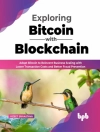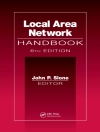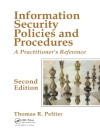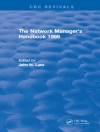A hands-on, beginner-friendly intro to web application pentesting
In A Beginner’s Guide to Web Application Penetration Testing, seasoned cybersecurity veteran Ali Abdollahi delivers a startlingly insightful and up-to-date exploration of web app pentesting. In the book, Ali takes a dual approach—emphasizing both theory and practical skills—equipping you to jumpstart a new career in web application security.
You’ll learn about common vulnerabilities and how to perform a variety of effective attacks on web applications. Consistent with the approach publicized by the Open Web Application Security Project (OWASP), the book explains how to find, exploit and combat the ten most common security vulnerability categories, including broken access controls, cryptographic failures, code injection, security misconfigurations, and more.
A Beginner’s Guide to Web Application Penetration Testing walks you through the five main stages of a comprehensive penetration test: scoping and reconnaissance, scanning, gaining and maintaining access, analysis, and reporting. You’ll also discover how to use several popular security tools and techniques—like as well as:
- Demonstrations of the performance of various penetration testing techniques, including subdomain enumeration with Sublist3r and Subfinder, and port scanning with Nmap
- Strategies for analyzing and improving the security of web applications against common attacks, including
- Explanations of the increasing importance of web application security, and how to use techniques like input validation, disabling external entities to maintain security
Perfect for software engineers new to cybersecurity, security analysts, web developers, and other IT professionals, A Beginner’s Guide to Web Application Penetration Testing will also earn a prominent place in the libraries of cybersecurity students and anyone else with an interest in web application security.
Зміст
Foreword xvii
Introduction xix
Chapter 1 Introduction to Web Application Penetration Testing 1
The Importance of Web Application Security 3
Overview of Web Application Penetration Testing 6
The Penetration Testing Process 8
Methodologies 12
Tools and Techniques 14
Reporting 16
Types of Web Application Vulnerabilities 17
Key Takeaways 25
Chapter 2 Setting Up Your Penetration Testing Environment 27
Setting Up Virtual Machines 28
Container Option 29
Kali Linux Installation 30
Pentest Box 34
Installing DVWA 35
OWASP Juice Shop 40
Burp Suite 41
OWASP ZED Attack Proxy 46
WILEY Preconfigured Environment 49
Key Takeaways 49
Chapter 3 Reconnaissance and Information Gathering 51
Passive Information Gathering 52
Automating Subdomain Enumeration 61
Active Information Gathering 64
Open-Source Intelligence Gathering 77
Key Takeaways 88
Chapter 4 Cross-Site Scripting 89
XSS Categories 90
Reflected XSS 91
Stored XSS 93
Automatic User Session Hijacking 94
Website Defacement Using XSS 96
DOM-Based XSS 97
Self-XSS 98
Browser Exploitation Framework 100
XSS Payloads and Bypasses 102
XSS Mitigation Techniques 105
Reflected XSS Bypass Techniques 107
Stored XSS Bypass Technique 110
Key Takeaways 112
Chapter 5 SQL Injection 113
What Is SQL Injection? 113
Types of SQL Injection 114
Error-Based SQL Injection 117
Union-Based SQL Injection 117
Blind SQL Injection 123
SQLMap 126
SQL Injection Payloads with Chat GPT 140
SQL Injection Prevention 142
Key Takeaways 145
Chapter 6 Cross-Site Request Forgery 147
Hunting CSRF Vulnerability 149
CSRF Exploitation 149
XSS and CSRF 151
Clickjacking 152
Generating an Effective Proof of Concept Using Chat GPT 154
Tips for Developers 157
Key Takeaways 158
Chapter 7 Server-Side Attacks and Open Redirects 159
Server-Side Request Forgery 159
SSRF in Action 160
SSRF Vulnerability 162
Blind SSRF 164
Local File Inclusion 166
Remote File Inclusion 170
Open Redirect 173
Server-Side Attacks Differences 177
Security Mitigations 178
Key Takeaways 181
Chapter 8 XML-Based Attacks 183
XML Fundamentals 183
XXE Exploitation 185
Hunting XML Entry Points 187
SSRF Using XXE 192
Do S Using XXE 193
XXE Payload and Exploitation with Chat GPT 195
XML-Based Attacks Countermeasures 196
Key Takeaways 198
Chapter 9 Authentication and Authorization 201
Password Cracking and Brute-Force Attacks 205
Credential Stuffing Attack 211
Password Spraying 213
Password Spraying Using Burp Suite Intruder 214
Other Automated Tools for Password Attacks 215
JSON Web Token 223
Key Takeaways 225
Chapter 10 API Attacks 227
OWASP API Top 10 228
API Enumeration and Discovery 230
API Discovery Using Chat GPT 231
API Broken Object-Level Authorization Exploitation 235
Rate Limiting 240
API Penetration Testing Tools 242
API Security Tips 244
Key Takeaways 245
Appendix A Best Practices and Standards 247
Information Gathering 248
Configuration and Deployment Management Testing 251
Identity Management Testing 254
Authentication Testing 256
Authorization Testing 261
Session Management Testing 265
Input Validation Testing 273
Testing for Error Handling 285
Testing for Weak Cryptography 286
Business Logic Testing 290
Client-Side Testing 297
Appendix B CWE and CVSS Score 307
Base Score 308
Temporal Score 308
Environmental Score 309
Appendix c Writing Effective and Comprehensive Penetration Testing Reports 311
Table of Contents (To C) 311
Project History and Timeline 311
Scope 312
Testing Approach 312
Executive Summary 312
Industry Standard 312
Findings Table 312
Findings Details 313
Key Takeaways 315
Index 317
Про автора
ALI ABDOLLAHI is a cybersecurity researcher with over 12 years of experience. Currently, he is the application and offensive security manager at Canon EMEA. He studied computer engineering, published articles, and holds several professional certificates. Ali is a Microsoft MVP and regular speaker or trainer at industry conferences and events.












